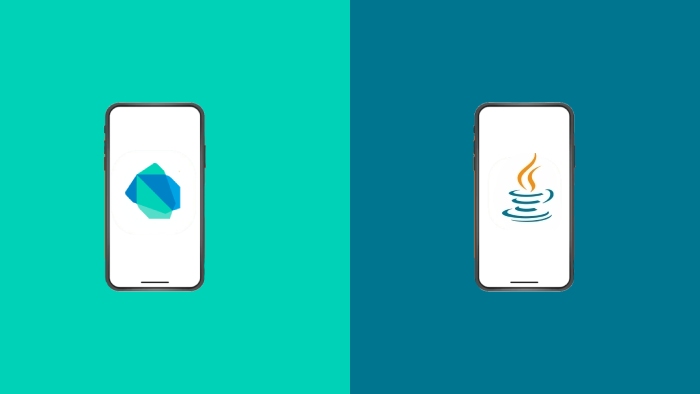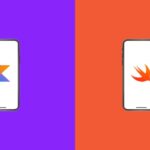Choosing the right programming language is crucial for building robust and efficient applications. When it comes to developing mobile and web applications, Dart and Java are two prominent choices. Both languages have their strengths and weaknesses, and understanding them is essential for making an informed decision. In this blog post, we’ll delve into a detailed comparison of Dart and Java, focusing on various aspects such as syntax, performance, ecosystem, and suitability for app development.
Difference between Dart and Java:
Traditional vs. Modern Syntax:
Java follows a traditional approach, often requiring verbose code to accomplish tasks. Conversely, Dart embraces a more modern syntax, reducing boilerplate code and promoting conciseness. This makes Dart code more readable and less prone to human-made errors, enhancing developer productivity.
Here’s a simple example demonstrating the syntax difference between Java and Dart for a basic “Hello, World!” program:
Java:
public class HelloWorld {
public static void main(String[] args) {
System.out.println(“Hello, World!”);
}
}
Dart:
void main() {
print(‘Hello, World!’);
}
This example highlights the differences in syntax between Java and Dart, showcasing Dart’s more concise and modern approach compared to Java’s more verbose syntax.
Null Safety:
Java allows assigning null values to objects, which can lead to NullPointerExceptions when accessing members of null references. In contrast, Dart prioritizes null safety by default, disallowing null values unless explicitly specified. This proactive approach to null handling in Dart improves code stability and reduces the likelihood of runtime errors.
Here’s an example illustrating the difference in null safety between Java and Dart:
Java (without null safety):
public class Example {
public static void main(String[] args) {
String name = null; // Allowing null assignment
System.out.println(“Length of name: ” + name.length()); // NullPointerException at runtime
}
}
Dart (with null safety):
void main() {
String? name = null; // Nullable string
if (name != null) {
print(“Length of name: ${name.length}”); // No NullPointerException due to null check
} else {
print(“Name is null”);
}
}
This example demonstrates how Dart’s null safety feature helps prevent NullPointerExceptions at compile-time, whereas Java allows null assignments by default, leading to potential runtime errors.
Asynchronous Programming:
Java traditionally relies on callback-based approaches or explicit threading for asynchronous programming, which can lead to complex and error-prone code. Dart, on the other hand, offers built-in support for asynchronous programming through features like async/await. This simplifies the development of asynchronous tasks, making Dart well-suited for building responsive and scalable applications, particularly in web and mobile development.
Ecosystem and Platform Support:
Java benefits from a vast ecosystem of libraries, frameworks, and tools, making it a popular choice for a wide range of applications, including enterprise systems, Android app development, and more. Dart, although younger, has seen rapid adoption, particularly with the Flutter framework for cross-platform mobile development. While Java’s maturity and ecosystem offer extensive support, Dart’s focus on modern development paradigms and cross-platform capabilities make it an attractive option for certain projects and use cases.
Garbage Collection and Memory Management:
Java employs automatic garbage collection to manage memory, which helps developers avoid memory leaks and manual memory management. This feature simplifies memory management tasks, especially in large-scale applications. Dart, similarly, utilizes garbage collection for memory management, ensuring efficient resource usage and reducing the risk of memory-related bugs.
Performance and Execution:
Java’s performance benefits from its Just-In-Time (JIT) compilation approach, which allows for dynamic optimization at runtime, resulting in efficient code execution. Additionally, Java applications can be compiled ahead-of-time (AOT) for improved startup performance. Dart, on the other hand, supports both JIT and AOT compilation, providing flexibility in optimizing performance for different use cases. This enables Dart to achieve competitive performance levels, particularly in the context of Flutter app development.
Community and Adoption:
Java boasts a vast and mature community of developers, contributors, and users, supported by extensive documentation, forums, and resources. This strong community presence contributes to Java’s continued relevance and widespread adoption across industries. Dart, while relatively newer, has been rapidly adopted, particularly in the context of Flutter development. The growing community around Dart, fueled by its association with Google and the popularity of Flutter, indicates promising future prospects for the language.
Learning Curve and Adoption:
Java’s widespread adoption and extensive documentation make it relatively accessible for developers, especially those transitioning from other programming languages. Additionally, the mature ecosystem of libraries and frameworks simplifies development tasks and accelerates the learning process. Dart, although newer, offers a gentle learning curve, thanks to its modern syntax and focus on simplicity. The intuitive nature of Dart, coupled with comprehensive documentation and community support, facilitates rapid adoption, particularly for web and mobile development projects.
Which is Better for App Development?
Determining which language is better for app development depends on various factors such as project requirements, target platforms, developer expertise, and ecosystem support. Both Java and Dart have their strengths and are suitable for different types of app development.
Java is a preferred choice for Android app development due to its long-standing support, extensive ecosystem of libraries and tools, and mature development environment provided by Android Studio. Java’s robustness, platform independence, and performance optimizations make it well-suited for building complex and feature-rich Android applications, especially those targeting a wide range of devices and Android versions.
On the other hand, Dart, particularly when used with the Flutter framework, is gaining popularity for cross-platform app development. Flutter allows developers to build high-quality native interfaces for iOS and Android using a single codebase, thereby reducing development time and effort. Dart’s modern syntax, support for reactive programming, and hot reload feature enhance developer productivity and enable rapid iteration during app development. Additionally, Flutter’s growing ecosystem of packages and widgets further boosts its appeal for app development.
Ultimately, the choice between Java and Dart for app development depends on factors such as platform requirements, project complexity, development timeline, and developer preferences. For Android-specific projects with a focus on performance and platform integration, Java remains a strong choice. However, for cross-platform app development or projects requiring a modern UI framework and fast iteration cycles, Dart with Flutter can be a compelling option.

